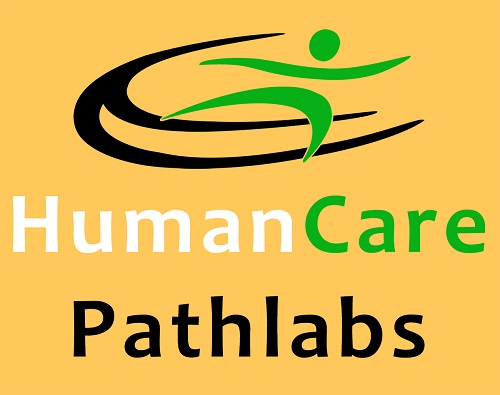Best Facilities Services At Your DoorStep
ECG (Electrocardiogram)
Price : INR 500/-
ECG
An electrocardiogram is a picture of the electrical conduction of the heart. By examining changes from normal on the ECG, clinicians can identify a multitude of cardiac disease processes.
There are two ways to learn ECG interpretation — pattern recognition (the most common) and understanding the exact electrical vectors recorded by an ECG as they relate to cardiac electrophysiology — and most people learn a combination of both. This tutorial pairs the approaches, as basing ECG interpretation on pattern recognition alone is often not sufficient.

The Normal ECG
A normal ECG contains waves, intervals, segments and one complex, as defined below.
Wave: A positive or negative deflection from baseline that indicates a specific electrical event. The waves on an ECG include the P wave, Q wave, R wave, S wave, T wave and U wave.
Interval: The time between two specific ECG events. The intervals commonly measured on an ECG include the PR interval, QRS interval (also called QRS duration), QT interval and RR interval.
Segment: The length between two specific points on an ECG that are supposed to be at the baseline amplitude (not negative or positive). The segments on an ECG include the PR segment, ST segment and TP segment.
Complex: The combination of multiple waves grouped together. The only main complex on an ECG is the QRS complex.
Point: There is only one point on an ECG termed the J point, which is where the QRS complex ends and the ST segment begins.
The main part of an ECG contains a P wave, QRS complex and T wave. Each will be explained individually in this tutorial, as will each segment and interval.
The P wave indicates atrial depolarization. The QRS complex consists of a Q wave, R wave and S wave and represents ventricular depolarization. The T wave comes after the QRS complex and indicates ventricular repolarization.
Parts of an ECG
The standard ECG has 12 leads. Six of the leads are considered “limb leads” because they are placed on the arms and/or legs of the individual. The other six leads are considered “precordial leads” because they are placed on the torso (precordium).
The six limb leads are called lead I, II, III, aVL, aVR and aVF. The letter “a” stands for “augmented,” as these leads are calculated as a combination of leads I, II and III.
The six precordial leads are called leads V1, V2, V3, V4, V5 and V6.
Below is a normal 12-lead ECG tracing. The different parts of the ECG will be described in the following sections.
HumanCare Path Labs: Your Trusted Partner in Healthcare and Diagnostics
Experience Precision and Care
At HumanCare Path Labs, we are committed to providing accurate and timely diagnostic services to our patients in Delhi and NCR. With state-of-the-art technology and a team of highly skilled professionals, we offer a comprehensive range of diagnostic tests to cater to your diverse healthcare needs.
Why Choose HumanCare Path Labs?
- State-of-the-Art Technology: We utilize the latest diagnostic equipment to ensure accurate and reliable results.
- Expert Team: Our experienced pathologists and technicians are dedicated to delivering the highest quality care.
- Convenient Locations: Our multiple clinics across Delhi and NCR make it easy to access our services.
- Quick Turnaround Time: We prioritize timely results to help you make informed decisions about your health.
- Patient-Centric Approach: We are committed to providing a comfortable and hassle-free experience for all our patients.
Our Range of Services
HumanCare Path Labs offers a wide range of diagnostic services, including:
- Blood Tests: Comprehensive blood tests to assess overall health, including blood sugar tests, cholesterol tests, liver function tests, kidney function tests, and more.
- ECG: Electrocardiogram (ECG) tests to diagnose heart conditions and abnormalities.
- MRI Scans: Magnetic Resonance Imaging (MRI) scans for detailed imaging of internal organs and tissues.
- PET Scans: Positron Emission Tomography (PET) scans for detecting cancer and other diseases.
- Holter Monitoring: Continuous monitoring of heart rhythm over 24 hours.
- NCV Tests: Nerve Conduction Velocity tests to assess nerve health.
- 24-Hour Blood Pressure Monitoring: Continuous monitoring of blood pressure over 24 hours.
- EMG Tests: Electromyography tests to assess muscle health and nerve function.
- Sleep Studies: Polysomnography to diagnose sleep disorders like sleep apnea.
- EEG Tests: Electroencephalography to measure brain electrical activity.
- Pulmonary Function Tests: To assess lung function and diagnose respiratory conditions.
Why Regular Diagnostic Tests are Important
Regular diagnostic tests are crucial for maintaining good health. They can help detect potential health problems early, allowing for timely intervention and treatment. Some of the benefits of regular diagnostic tests include:
- Early Detection of Diseases: Regular check-ups can help detect diseases like cancer, diabetes, and heart disease in their early stages.
- Monitoring Chronic Conditions: For people with chronic conditions, regular tests can help monitor disease progression and adjust treatment plans as needed.
- Assessing Overall Health: Comprehensive blood tests can provide insights into overall health, including nutritional deficiencies, hormonal imbalances, and other underlying conditions.
- Peace of Mind: Knowing your health status can provide peace of mind and help you make informed decisions about your lifestyle and healthcare.
Book Your Appointment Today
To get your tests done, please fill out the form on contact page, call our front desk on below given numbers, or simple visit the center directly. Our friendly staff is ready to assist you with any questions or concerns you may have.
Visit Us
J-17, Lower Ground Floor, Kalindi Kunj Rd, Jamia Nagar, Okhla, New Delhi 110025
+91 62040 63485
+91 80762 50713
+911145665176
info@hcpathlabs.com
Opening Hours
Mon - Sat: 8:00 am - 6:00 pm Sundays: 8:00 am - 1:00 pm
